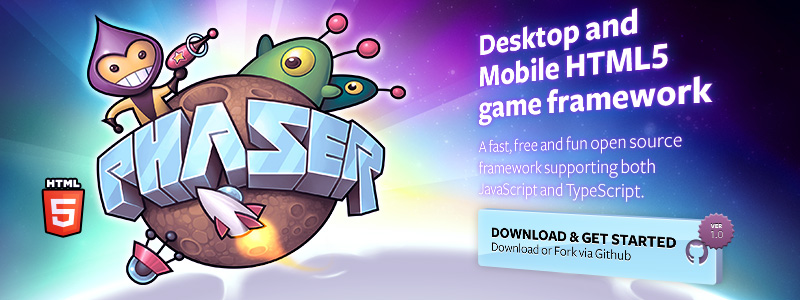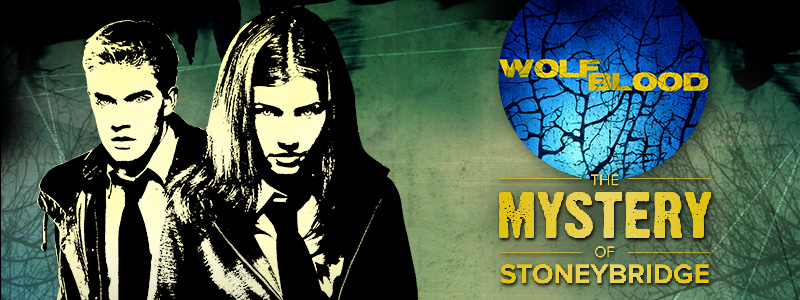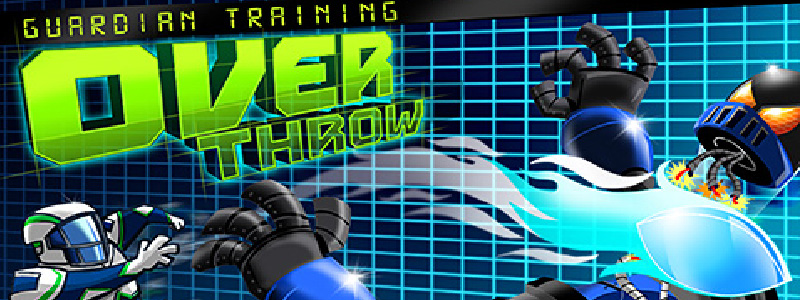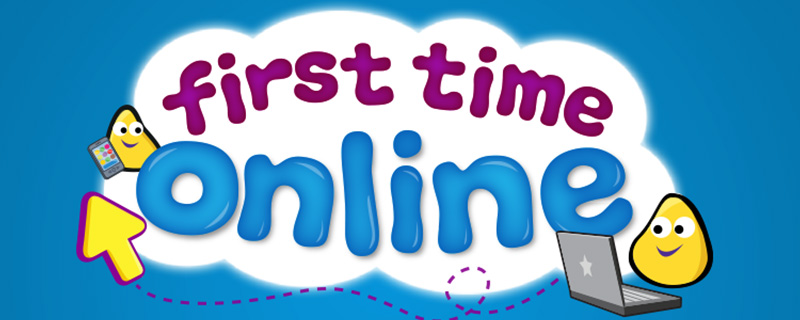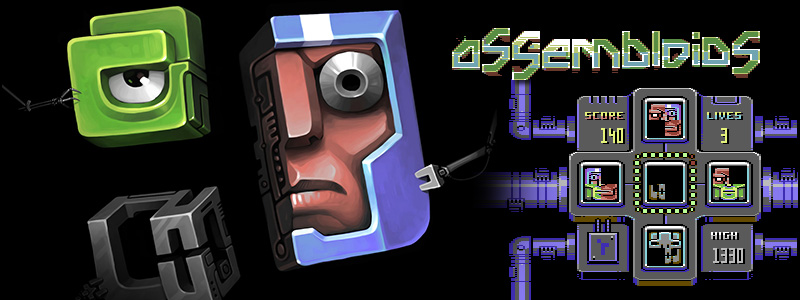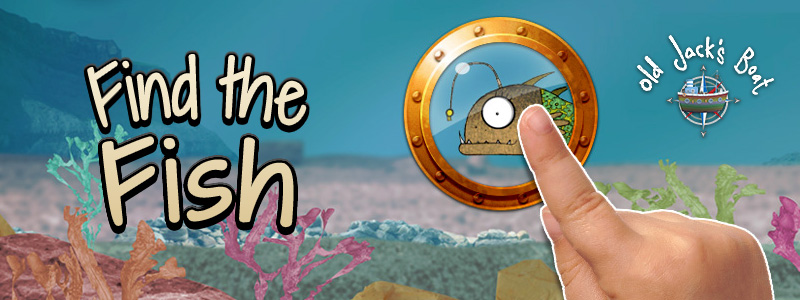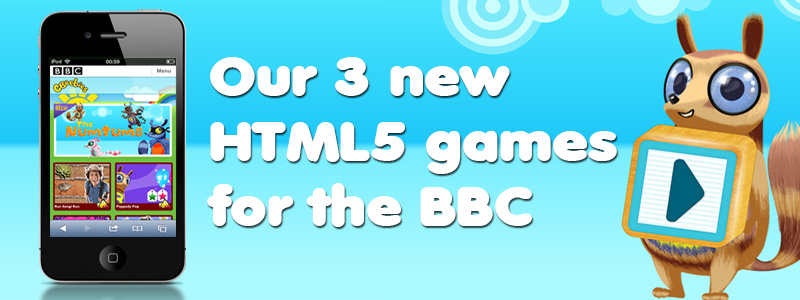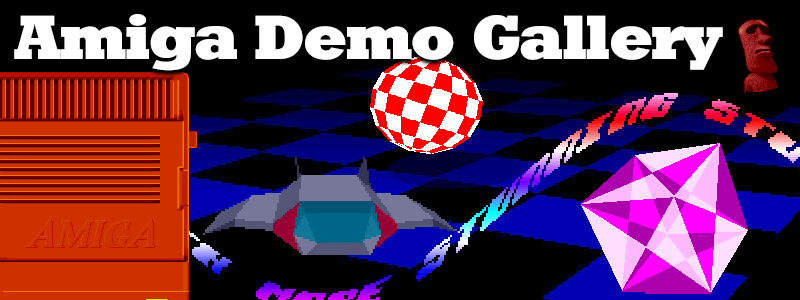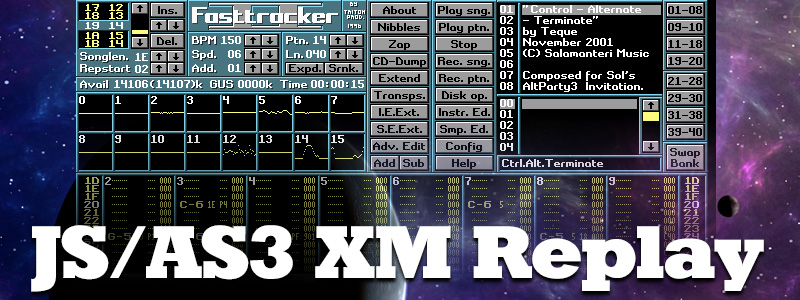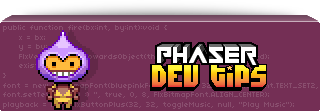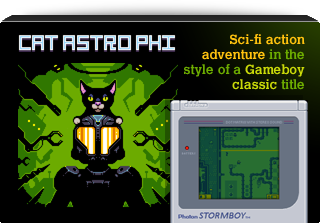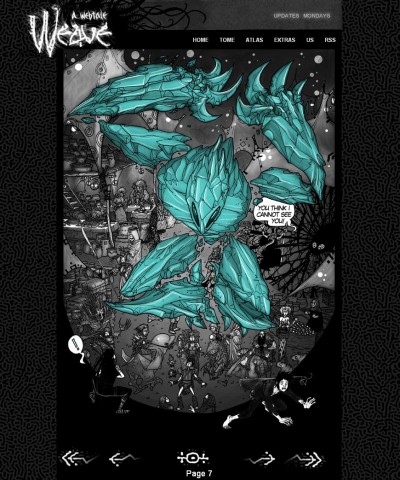Latest Posts
-
My review of Foundation ActionScript 3.0 Image Effects
2nd Sep 20097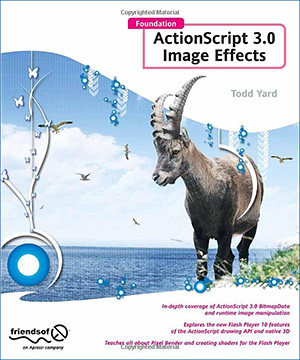 I have to admit I was really looking forward to this book. As a Flash games developer I’m always keen to read about interesting new techniques when working with bitmap data. I was also eager to learn about Pixel Bender and FP10 in depth. Sadly this book fails to deliver most of that.
I have to admit I was really looking forward to this book. As a Flash games developer I’m always keen to read about interesting new techniques when working with bitmap data. I was also eager to learn about Pixel Bender and FP10 in depth. Sadly this book fails to deliver most of that.You get a lot of book for your money (650+ pages) but it works on the basis of “list all of the commands in X API, and explain them bit by bit”. The problem being that the explanations are often very short and give you even less information than Adobe Livedocs does. The Blend Modes chapter has lots of large images in it, which are all in black and white, so are of course a complete waste of space (the author does mention as much, but it begs the question why bother having them).
The “Advanced Bitmap Manipulation” chapter starts off by teaching you how to use the dissolve method (a truly quite useless method if ever there was one) and yet it takes up nearly 5 pages of the book. Perlin Noise follows – another 16 pages gone – although at least this one is quite interesting, and it goes into it in a little depth. The whole chapter is really nothing more than going through all the properties and methods of BitmapData. Which is ok, but Livedocs does it just as well and often with more explanation.
The Pixel Bender chapter explains what a shader is, the basics of using the toolkit and creates a very very simple kernel. It does a good job of explaining this shader, but it stops there and doesn’t go any further. It tells you about using shaders for custom filters and blend modes, but gives no further details on how to write them. So you will get precious little more than a brief introduction to PB, certainly not enough to code a shader beyond the example given. This is annoying as the front cover of the book says “Teaches ALL about Pixel Bender” – no, it doesn’t. It barely scratches the surface. It’s nothing more than a “Hello World” of Pixel Bender.
It then goes into 3D. The explanations here are useful but simple. Depth of field, extrusion, z ordering, that sort of thing. In short you probably know it all already. It shows you how to extrude text (by basically cloning the text object a number of times in ever decreasing sizes, so faking it – don’t bother, use Away3D), rotation, scrolling and very basic billboarding.
The rest of the book is made up of chapters going on about the authors own graphics library (aeon / aether) and applying this to text, sound and video. It’s a nice idea but honestly most devs will have similar libraries they use already, and none of the effects shown are very “every day” (how often do you really need to set fire to some text? honestly?).
It’s a crying shame as I really wanted to like this book, but despite its mammoth size it feels very lazy. Chapters are little more than method dumps with the briefest of explanations for each property. Examples are numerous but uninspiring, and there really isn’t a single “Advanced” bitmap effect to be seen anywhere.
I guess depending on your experience level this book could be useful. But if you’ve got the time to check out Livedocs, read a few blogs and basically experiment for yourself then you’ll learn a whole lot more, a whole lot faster in my opinion.
The book is available here on Amazon and all the usual places.
-
Weave Webcomic
28th Aug 2009Recently I did web design for a nifty new webcomic called Weave.
Check it out here. -
Q-BLOCK: Create 3D Pixel Art Online
27th Aug 2009Aww this is just too much fun! Take a 2D sprite, extrude it into 3D and then shave and tweak as required.
Voila, you’ve just described Q-BLOCK and created your first piece of 3D pixel art:
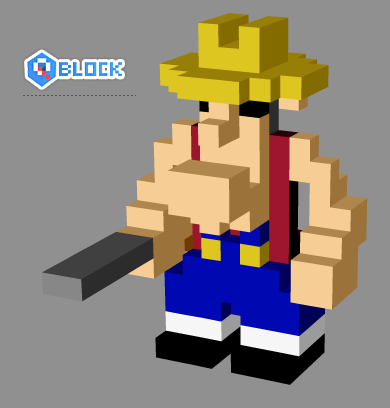
It’s cool pixel art, in 3D (rotation under you control). And you can edit any model you like, change the colours or just add on new parts.
I had a very similar idea to this years ago, and never bothered to do anything with it. I built a small prototype app in DarkBASIC that would build a 3D model from a 2D sprite. But the Q-BLOCK guys have gone a whole step beyond that, and it rocks.
Check out their blog for some excellent examples of insanely good Q-BLOCKery.
-
$10,000 Unity 3D Indie Developer Contest
25th Aug 2009I’ve never blogged about Unity before, not because I’ve got anything against it, but just because I’ve no real commercial interest until it gains a lot more mainstream use. However I know a lot of you guys wear both your Flash and Unity caps depending on project, and when this press release from MuseGames landed in my inbox I figured it was only fair to give them a shout. The following is cut ‘n pasted verbatim, so don’t forget to do some research yourself to see if it’s worth the effort – but the prize certainly sounds sweet enough.
 NEW YORK, NY – Muse Games (musegames.com), a growing portal for browser-based 3D gaming, today announced the launch of “Immunity,” an indie game development challenge based on the Unity 3D (unity3d.com) engine. Contestants can submit a simple game prototype to be voted on by the development community and general public, and ultimately compete for a $10,000 contract to finish the game for distribution on musegames.com and beyond.
NEW YORK, NY – Muse Games (musegames.com), a growing portal for browser-based 3D gaming, today announced the launch of “Immunity,” an indie game development challenge based on the Unity 3D (unity3d.com) engine. Contestants can submit a simple game prototype to be voted on by the development community and general public, and ultimately compete for a $10,000 contract to finish the game for distribution on musegames.com and beyond.Full contest details and a sample concept can found at http://musegames.com/community/immunitychallenge
Both professional and non-professional individuals, or teams, are being asked to submit simple Unity-based prototypes demoing their game concept. Voting participants will then be able to play the game and judge its primary mechanic. The top 5 concepts will be granted “immunity” and evaluated by the Muse team. Submission will take place between 8/25 and 10/15, with the $10,000 grand prize winner being announced at the UNITE Unity 3D development conference in San Francisco, Oct 27-30. Participants and spectators will be able to track the progression of the winning game concept to completion on the Muse Games blog.
“As Indie developers ourselves, we believe strongly in the Indie community and want to reward developers for making great games,” says Co-Founder Austin Lane. “Hopefully we can make this model a successful one for the future, and ultimately raise the stakes on browser-based indie development.”
MUSE GAMES LAUNCHES “IMMUNITY,” A $10,000 UNITY3D-BASED INDIE GAME DEVELOPMENT CHALLENGECompetition provides aspiring game developers with unique opportunity to finance their game idea, and lends support to nascent browser-based 3D gaming industry
NEW YORK, NY – Muse Games (musegames.com), a growing portal for browser-based 3D gaming, today announced the launch of “Immunity,” an indie game development challenge based on the Unity 3D (unity3d.com) engine. Contestants can submit a simple game prototype to be voted on by the development community and general public, and ultimately compete for a $10,000 contract to finish the game for distribution on musegames.com and beyond.Full contest details and a sample concept can found at http://musegames.com/community/immunitychallenge
Both professional and non-professional individuals, or teams, are being asked to submit simple Unity-based prototypes demoing their game concept. Voting participants will then be able to play the game and judge its primary mechanic. The top 5 concepts will be granted “immunity” and evaluated by the Muse team. Submission will take place between 8/25 and 10/15, with the $10,000 grand prize winner being announced at the UNITE Unity 3D development conference in San Francisco, Oct 27-30. Participants and spectators will be able to track the progression of the winning game concept to completion on the Muse Games blog.
“As Indie developers ourselves, we believe strongly in the Indie community and want to reward developers for making great games,” says Co-Founder Austin Lane. “Hopefully we can make this model a successful one for the future, and ultimately raise the stakes on browser-based indie development.”
About Muse Games:
Muse Games was founded in 2008 to bring 3D multiplayer casual gaming to the internet’s doorstep. The web platform launched in May ’09 and has been growing its game catalog and adding features since. Recently Muse has opened up to outside developers who wish to increase the exposure and monetization capability of their Unity 3D games. -
Bug Box Released
25th Aug 2009I’m pleased to say that my little “game in a day” creation Bug Box is now released and out in the wild! You can play it over on its games page. Or if you feel like giving it some rating love it’s also on Newgrounds and Kongregate. Quite why I uploaded a game featuring nature sounds, cute little bugs and pure cerebral gameplay to those two sites is utterly beyond me. Hopefully my sanity will have returned by the morning 🙂 On the plus side it’ll appear on BigFishGames by the end of the month.
More posts to tickle your grey matter ...
- Phaser Coding Tips 5
- Phaser Coding Tips 4
- Phaser 3 Development Log - w/e 30 Jan
- Phaser Coding Tips 3
- Phaser 3 Development Log - w/e 16th Jan
- Phaser Coding Tips 2
- Phaser Coding Tips 1
- Phaser v2.1.3 and Pixi v2 are out!
- Welcome to the DarkForge - An archive of all my old DarkBASIC code
- Phaser goes to the movies
Hire Us
All about Photon Storm and our
HTML5 game development services
Recent Posts
OurGames
Filter our Content
- ActionScript3
- Art
- Cool Links
- Demoscene
- Flash Game Dev Tips
- Game Development
- Gaming
- Geek Shopping
- HTML5
- In the Media
- Phaser
- Phaser 3
- Projects
Brain Food

